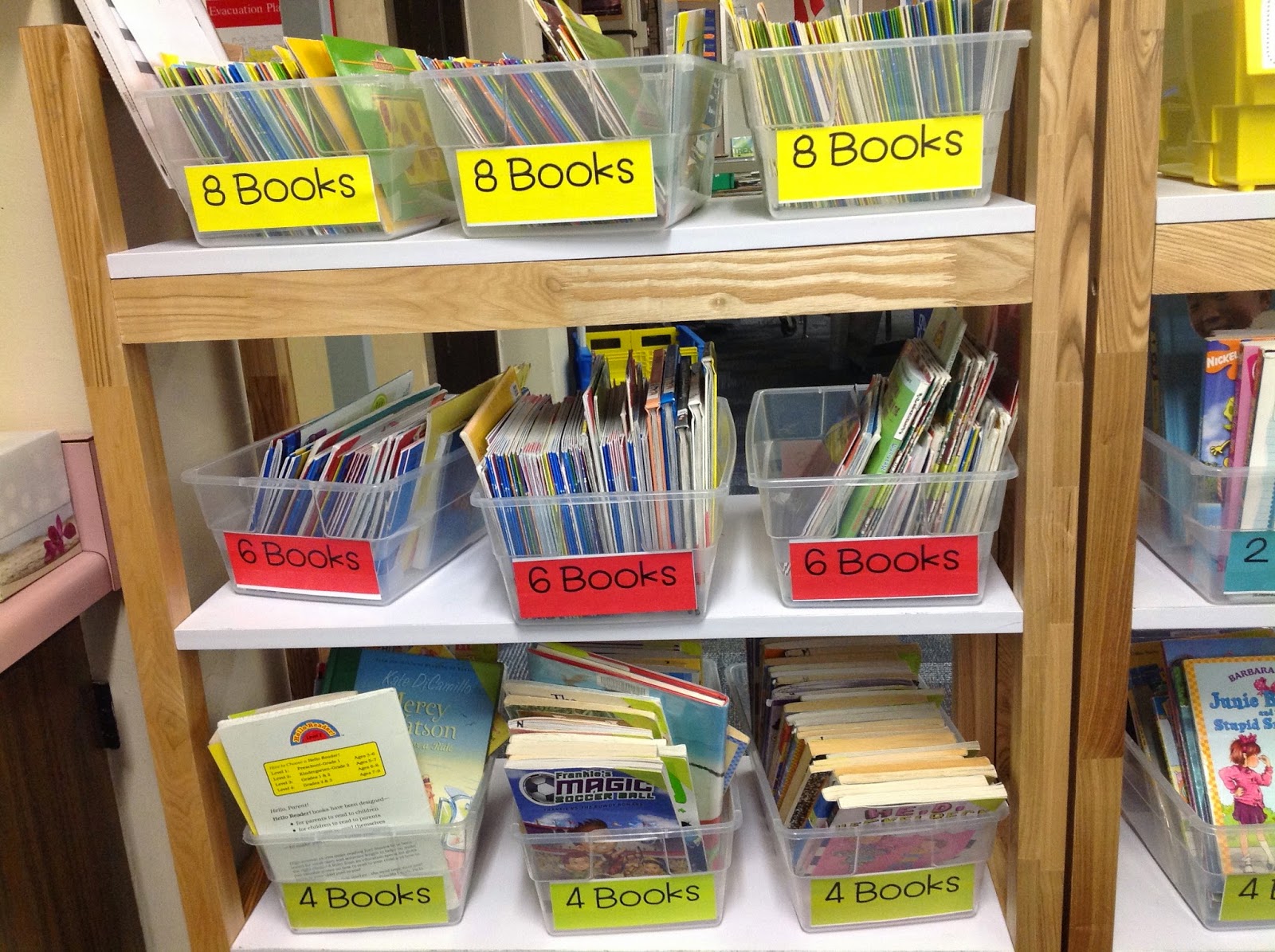I know I've posted on this before, but I've had some questions. So here is the illustrated tour of my second grade classroom library:
First off, the leveled book section...If you want to know more about the levels, how they correlate with F & P or DRA, see this post from the summer. Basically the important things to point out here is that the shelves were $20 each from Goodwill and the plastic bin were $5 for 6 at target. Well, thats not THE important thing....but its one of them :) The numbers on the outside are there to remind the students of how many of the level they should have in their book box at a time. They find out what bins they should take from in reading conferences with me. If you are familiar with levels of reading you know that the very beginning books are extremely short and students usually need 8-10 to keep busy reading. This is why they take a minimum of 8 books from yellow. I know there is discussion from teachers about how many chapter books should really be reading at the same time and so some of you might disagree with 4 lime green books or even 2 teal books in a book box at once. My thinking about that is this; at this very moment, I have 3 books on my nightstand and 2 in my purse. I am reading only 2 of them and the rest are lined up waiting for "their turn"....my students deserve to do the same!
You can see in the photos below that the books are not letter or number labeled...I gave that up when I switched my library organization up. Instead, I used colored masking tape on the corners to indicate the level and help with quick organization. Once again, if you want to know more about the color levels, see this post.
As far as the other books go (which I refer to choice books) here are the details:
- I have them separated into literature text (animal characters, poetry, realistic fiction, etc) and informational texts (biographies, magazines, science, jobs, etc.)
- The books are each labeled in the top corner of the front corner of the cover and the informational text have a start sticker. This is how we tell informational apart from literature.
- I have the informational book bins on a counter and the literature text on some shelving that wraps around the room.
- Most students have just one of each kind at a time, sometimes more.
- The bins themselves are from IKEA and I have found them to be awesome storage for large books like these...















